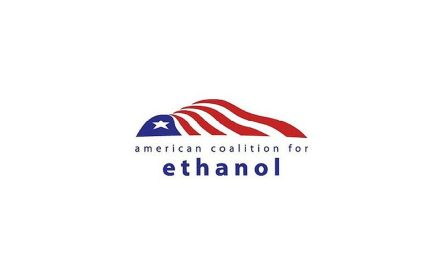NATSO, the national association representing truckstops and travel plazas, along with the National Association of Convenience Stores (NACS) and the Society of Independent Gasoline Marketers of America (SIGMA), told the Environmental Protection Agency (EPA) that its proposed RIN Market Reform regulations (see end of article for full details) are unnecessary solutions in search of problems, and that EPA should finalize only those aspects of the proposal that enhance disclosure requirements and set aside for future reconsideration those aspects that would modify market behavior.
The trade associations filed public comments in response to EPA’s proposed rule that would allow E-15 to be sold year-round subject to certain restrictions and also impose significant reforms in the market for Renewable Identification Numbers (RINs), which are the credits that EPA uses to ensure that refiners satisfy their obligations under the Renewable Fuel Standard (RFS). The associations told EPA that if finalized, the proposed rule would inject significant instability into the RIN market and suppress demand for renewable fuels.
“The proposed reforms are based on a false premise, and are inconsistent with explicit statements made by the agency as well as the Commodity Futures Trading Commission. The proposed reforms presume that RIN markets are structurally flawed and need to be fixed. This is false,” the associations, which represent more than 90% of retail fuel sales, said in comments filed with the agency on Monday April 29.
The Renewable Fuel Standard (RFS) was designed to encourage more renewable fuel blending by making such blending financially attractive. Some of the changes that the agency is proposing would fundamentally alter RIN markets, making it more difficult for fuel retailers to acquire and pass along the value that can be realized by blending renewable fuels.
The associations expressed serious concern with EPA issuing new regulations that would fundamentally alter market participants’ behavior. In issuing the proposed rule, EPA explicitly acknowledged that it has not seen any “data based evidence” of RIN market manipulation that would necessitate these reforms.
The groups reminded the agency that the primary source of volatility and manipulation in RIN markets are dubiously sourced media reports and uncertainty and opaqueness surrounding small refinery exemptions. “This has led to a situation where political rumors and media speculation about agency policy decisions have seemingly overtaken market fundamentals for purposes of RIN Valuation….All of this uncertainty has introduced volatility and risk into the RIN market, thereby benefiting the same anti-RFS entities that have urged the agency to explore the RIN market reforms associated with this proposal.”
“As EPA finalizes the Proposal, the associations encourage the agency to be guided by the principal of ‘symmetry.’ For example, any disclosure obligations imposed upon RIN-long obligated parties must apply in a fully parallel fashion to RIN-short obligated parties,” the associations wrote. “Neither position is more or less ‘manipulative’ of the market than the other.”
EPA’s Proposed RIN Reforms (pulled directly from THIS PDF)
EPA takes claims of RIN market manipulation seriously and although we have yet to see data-based evidence of such behavior, the potential for manipulation is a concern. Accordingly, we are proposing the four reforms outlined in President Trump’s October 11, 2018 statement 10 and are requesting comments on additional steps we can take to identify and prevent RIN market manipulation. Specifically, we are proposing and seeking comment on the following RIN market reforms outlined by the President, as well as some additional items identified by EPA:
- Requiring public disclosure when RIN holdings held by an individual actor exceed specified limits.
- Requiring the retirement of RINs for the purpose of compliance be made in real time.
- Prohibiting entities other than obligated parties from purchasing separated RINs.
- Limiting the length of time a nonobligated party can hold RINs.
For the first reform, we are proposing to set two RIN holding thresholds that would work in tandem to prevent potential accumulation of market power. These thresholds would apply to holdings of separated D6 RINs only.11 The first threshold would be triggered if a party’s end-of-day separated D6 RIN holdings exceeded three percent of the total implied conventional biofuel volume requirement. An obligated party that triggered the first threshold would then apply a second threshold by comparing its end-of-day separated D6 RIN holdings with 130 percent of its individual implied conventional renewable volume obligation (RVO). We are proposing that parties make daily calculations and make a yes/no certification statement to EPA in a quarterly report and that we would publish on our website the names of any parties that reported exceeding the thresholds. We seek comment on whether exceeding the thresholds should be considered a prohibited act. We are also proposing that the RIN holdings of corporate affiliates be included in a party’s calculations to determine if they trigger a threshold.
For the second reform, we are proposing to establish RIN retirement requirements for the first three quarters of the compliance year, calculated by an obligated party as its gasoline and diesel production and import volume through the end of the quarter multiplied by the current year renewable fuel standard. We propose to discount the requirement to 80 percent of the calculated volume to provide necessary flexibility. Obligated parties would submit reports to EPA 60 days after the end of the quarter to demonstrate compliance with these requirements and could use any D-code RINs to do so. This reform would not impact the current annual RVO calculations or compliance, including the two-year RIN life, the annual deficit carryover, or the 20 percent carryover provisions. We propose that an obligated party that fell short of its quarterly RIN retirement requirement in the current year would not be able to incur a deficit in its next year annual RVO.
For the third reform, we are proposing that only obligated parties, exporters, and certain non-obligated parties be allowed to purchase separated D6 RINs. Non-obligated parties would be exempt from this proposed restriction if they were a corporate or contractual affiliate to an obligated party. This would include blenders who could demonstrate that they had contracts to deliver separated RINs to an obligated party for the purpose of compliance. Non-obligated parties that need to replace invalid RINs would also be exempt from this proposed provision. For the fourth reform, we are proposing a limit on the duration that a non-obligated party could hold separated D6 RINs. Specifically, we are proposing that a non-obligated party would be required to sell or retire as many RINs as it obtained in a quarter. We are proposing that parties would make a yes/no certification statement to EPA about its compliance with this limit in a quarterly report and that auditors would confirm this statement in the annual attest engagement. Lastly, we outline our consideration of taking additional steps beyond those listed in the President’s directive to enhance our market monitoring capabilities. We propose that auditors would include in their attest engagements to EPA a full list of a party’s affiliates, including affiliates not registered with the RFS program. To improve our abilities to analyze and publish RIN price data, we propose that parties would follow certain conventions when reporting RIN prices to EPA and that they would report whether the RIN transaction was on the spot market or as the result of a term contract. We also explain that we plan to update business rules in EMTS to require that both parties in a RIN transaction enter the same RIN price. Finally, we discuss the possibility of employing a third-party market monitor to conduct analysis of the RIN market, including screening for potential anticompetitive behavior.









